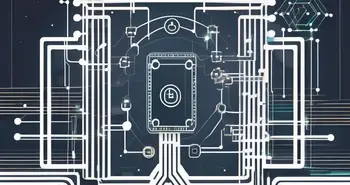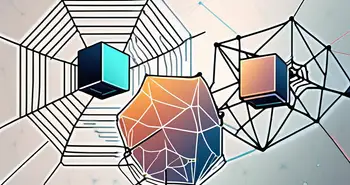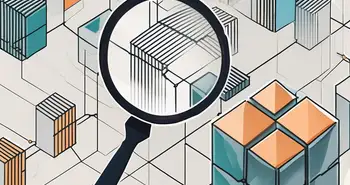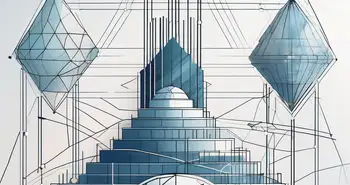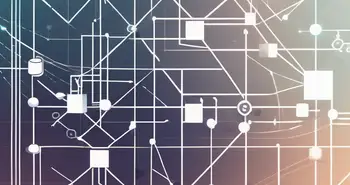An Introduction to Distributed Ledger Technology

As an expert in the field, I am here to provide you with the ultimate guide to Distributed Ledger Technology (DLT). Throughout this article, we will explore the fundamental concepts, evolution, types, and applications of DLT. By the end, you will have a comprehensive understanding of this transformative technology and its potential impact.
Understanding Distributed Ledger Technology
Definition and Basic Principles
Distributed Ledger Technology (DLT) is a decentralized system that enables multiple parties to maintain a shared and synchronized database without the need for a central authority. It is built upon the principles of transparency, immutability, and cryptographic security.
DLT utilizes a peer-to-peer network where each participant, known as a node, holds a copy of the ledger. This distributed nature eliminates the single point of failure, making the system resistant to hacking or manipulation.
Key Features of Distributed Ledger Technology
DLT offers several key features that make it a trustworthy and efficient platform:
- Transparency: Every transaction on the ledger is visible to all participants, ensuring accountability and reducing fraud.
- Immutability: Once a transaction is recorded on the ledger, it cannot be altered, providing a tamper-proof system.
- Decentralization: DLT removes the need for intermediaries, enabling direct peer-to-peer interactions.
- Efficiency: By eliminating intermediaries, DLT streamlines processes and reduces costs.
How Distributed Ledger Technology Works
The workings of DLT depend on the specific technology employed. The most well-known and widely adopted type of DLT is Blockchain, but there are other variants like Directed Acyclic Graphs (DAGs) and Hashgraph. Let's delve into each of them to grasp a better understanding.
Blockchain, the pioneering technology behind cryptocurrencies like Bitcoin, is a type of DLT that organizes data into blocks, which are then chained together in a chronological order. Each block contains a set of transactions, and once a block is added to the chain, it becomes a permanent part of the ledger. This immutability ensures that the data recorded on the blockchain is secure and tamper-proof.
Directed Acyclic Graphs (DAGs) is another type of DLT that offers a different approach to recording and validating transactions. Unlike blockchain, where blocks are added in a linear fashion, DAGs use a more complex structure. In a DAG, each transaction is linked to multiple previous transactions, creating a web-like structure. This allows for parallel processing and scalability, making DAGs a promising solution for high-volume transaction networks.
Hashgraph is a relatively new DLT technology that aims to overcome the scalability limitations of blockchain. It uses a consensus algorithm called gossip about gossip, where nodes communicate with each other to reach a consensus on the order of transactions. Hashgraph achieves fast and fair consensus, making it suitable for applications that require high throughput and low latency.
By understanding the different types of DLT, we can appreciate the versatility and potential of this technology. Whether it's blockchain, DAGs, or Hashgraph, distributed ledger technology is revolutionizing industries by providing secure, transparent, and efficient solutions for various use cases.
The Evolution of Distributed Ledger Technology
The Genesis of DLT
The concept of Distributed Ledger Technology (DLT) can be traced back to the emergence of Bitcoin in 2009. Bitcoin, created by the mysterious Satoshi Nakamoto, introduced the concept of a decentralized, transparent, and secure ledger called the Blockchain. This groundbreaking technology revolutionized the way we think about transactions and trust in the digital world. Its success paved the way for the development of various DLT platforms that have the potential to reshape industries and economies.
Milestones in DLT Development
Since its inception, DLT has witnessed significant milestones that have propelled its growth and adoption. One notable milestone is the introduction of Ethereum in 2015 by Vitalik Buterin. Ethereum expanded the capabilities of DLT by introducing smart contracts, enabling programmable transactions and opening up a world of possibilities for decentralized applications (DApps). This breakthrough innovation sparked a wave of excitement and experimentation within the blockchain community.
Another milestone in the development of DLT was the formation of consortia like R3 and Hyperledger. These collaborative efforts brought together industry leaders, technology experts, and regulators to drive enterprise adoption of DLT. By establishing common standards and frameworks, these consortia have played a crucial role in building trust and fostering collaboration among diverse stakeholders.
Current State and Future Prospects
The current state of DLT is marked by increasing adoption across various industries, including finance, supply chain management, healthcare, and government services. Financial institutions are leveraging DLT to streamline cross-border payments, reduce settlement times, and enhance transparency. Supply chain management companies are using DLT to track and authenticate products, ensuring the integrity of their supply chains. In healthcare, DLT is being explored to securely store and share patient data, enabling interoperability and improving patient outcomes. Governments around the world are also exploring the use of DLT for identity management, voting systems, and public service delivery.
As the technology matures, we can expect even broader applications and innovations. The scalability and interoperability challenges that currently exist are being addressed through research and development efforts. New consensus mechanisms, such as Proof of Stake (PoS) and Directed Acyclic Graphs (DAG), are being explored to improve the efficiency and sustainability of DLT networks. Additionally, advancements in privacy-preserving technologies are paving the way for confidential transactions on public blockchains, opening up new possibilities for industries that require data privacy.
Personally, as someone who has been involved in the development and implementation of DLT solutions for several years, I have witnessed its remarkable potential firsthand. Let me share a personal story that encapsulates the transformative power of DLT.
A few years ago, I worked with a financial institution that suffered from a series of fraudulent activities. The lack of transparency and central authority made it difficult to identify the culprits and recover the lost assets. That's when we implemented a Blockchain-based solution to secure transactions and provide an immutable audit trail. The results were astounding – the incidents of fraud significantly decreased, and trust among the stakeholders was restored. This experience solidified my belief in the power of DLT and its ability to revolutionize industries.
DLT is not just a buzzword; it is a technology that has the potential to reshape our world. As we continue to explore its possibilities and overcome its challenges, we are entering an era where trust, transparency, and efficiency are no longer luxuries but necessities. The evolution of DLT is an ongoing journey, and its future prospects are boundless.
Types of Distributed Ledger Technology
Blockchain Technology
Blockchain is the most well-known form of DLT, where transactions are grouped into blocks and linked together in a chain. Each block contains a cryptographic hash that verifies the integrity of the previous block, creating an unbreakable sequence of data.
Directed Acyclic Graphs (DAGs)
DAGs offer an alternative to the linear chain structure of Blockchain. In a DAG-based DLT, transactions form a graph-like structure, allowing for parallel processing and scalability.
Hashgraph
Hashgraph is a novel DLT that uses a voting-based consensus algorithm to achieve high-speed and fair transaction ordering. By allowing nodes to vote on the validity and order of transactions, Hashgraph ensures consensus without sacrificing performance.
Applications of Distributed Ledger Technology
Financial Services
DLT has found significant application in the financial sector. It enables faster and more secure cross-border payments, eliminates intermediaries in asset trading, and simplifies Know Your Customer (KYC) processes, reducing compliance costs and improving efficiency.
Supply Chain Management
The transparency and immutability provided by DLT make it invaluable in supply chain management. It enables end-to-end traceability, facilitates provenance verification, and ensures the authenticity of goods, combating counterfeiting and improving trust among stakeholders.
Healthcare
The healthcare industry can benefit greatly from DLT. It can facilitate secure sharing of patient records across different providers, reduce medical fraud, and enable real-time monitoring of drug supply chains, ensuring the integrity of medications and combating the distribution of counterfeit drugs.
Government Services
DLT has the potential to revolutionize government services by providing transparent and efficient systems. It can enable secure voting, streamline administrative processes, improve record-keeping, and enhance public trust in government institutions.
FAQ
What is Distributed Ledger Technology?
Distributed Ledger Technology is a decentralized system that allows multiple parties to maintain a synchronized database without the need for a central authority. It ensures transparency, immutability, and cryptographic security.
What are the key features of Distributed Ledger Technology?
The key features of DLT include transparency, immutability, decentralization, and efficiency. These features make DLT a trustworthy and efficient platform for various applications.
What are the different types of Distributed Ledger Technology?
There are several types of DLT, including Blockchain, Directed Acyclic Graphs (DAGs), and Hashgraph. Each technology has its own unique characteristics and use cases.
Where is Distributed Ledger Technology being applied?
DLT finds application in various industries, including financial services, supply chain management, healthcare, and government services. It enables improved security, transparency, and efficiency in these domains.
What is the future of Distributed Ledger Technology?
The future of DLT is promising. As the technology continues to mature, we can expect to witness even wider adoption and advancements in scalability, privacy, and interoperability. DLT has the potential to revolutionize multiple industries and reshape the way we interact and transact.
As an expert in the field, I hope this guide has provided you with valuable insights into Distributed Ledger Technology. The transformative potential of DLT is immense, and by embracing this technology, we can unlock new levels of trust, efficiency, and innovation.
Embracing the future of Distributed Ledger Technology means choosing platforms that are at the forefront of innovation. Morpher.com exemplifies this by transforming the investment landscape through its blockchain-based trading platform. With its commitment to zero fees, infinite liquidity, and a unique trading experience, Morpher is ideal for those who want to leverage the advantages of DLT in their trading strategies. Whether you're interested in stocks, cryptocurrencies, or even niche markets like NFTs, Morpher offers the tools for a seamless and efficient trading experience. Sign up now to join the revolution in global trading and receive your free sign-up bonus. Experience the power of DLT with Morpher today. Sign Up and Get Your Free Sign Up Bonus

Disclaimer: All investments involve risk, and the past performance of a security, industry, sector, market, financial product, trading strategy, or individual’s trading does not guarantee future results or returns. Investors are fully responsible for any investment decisions they make. Such decisions should be based solely on an evaluation of their financial circumstances, investment objectives, risk tolerance, and liquidity needs. This post does not constitute investment advice.

Painless trading for everyone
Hundreds of markets all in one place - Apple, Bitcoin, Gold, Watches, NFTs, Sneakers and so much more.

Painless trading for everyone
Hundreds of markets all in one place - Apple, Bitcoin, Gold, Watches, NFTs, Sneakers and so much more.


